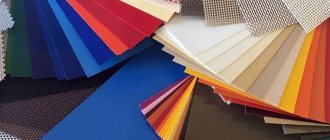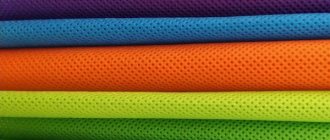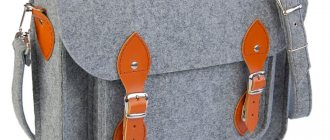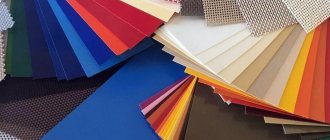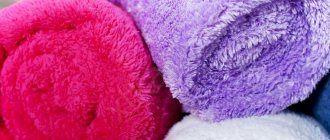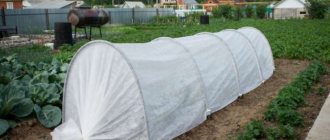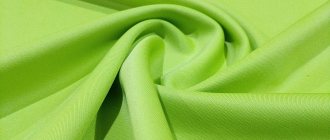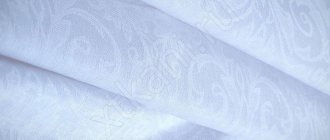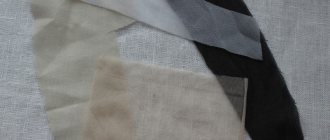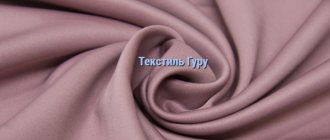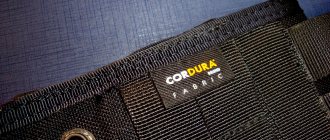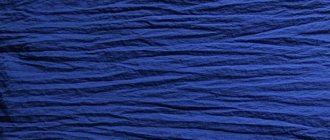Agrofibre (spunbond) is an indispensable material for gardeners, especially those who grow vegetables in regions with cool climates. We will tell you how to properly use this material to help plants develop well and increase their productivity.
Spunbond began to be used in plant cultivation more than 15 years ago. To this day it is an excellent alternative to polyethylene. Using this non-woven material, you can easily create optimal conditions on your site for the growth and development of plants throughout the year.
Properties and description
Dense lightweight synthetic material with geometric diamond-shaped or square, small holes on the surface. Obtained by melting polymers, it has the name Spunbond (spunlaid) derived from the production method.
These types of materials are called non-woven because the threads obtained by melting polypropylene granules do not need to be woven. They are fastened in several ways without using adhesives.
Spunbond is a synthetic fabric made using the same technology. The material is obtained from polymer threads or fibers without the use of weaving equipment. The material looks like a homogeneous fabric with a barely noticeable geometric pattern (interlacing of threads).
Environmentally friendly fiber allows air to pass through and does not absorb moisture. The material is heat-resistant, durable, lightweight. Its characteristics clearly demonstrate why spunbond is needed, and determined the areas of use of non-woven fabric.
Geotextiles are distinguished by the thickness of the fibers and the density of their bonding, which determines the purpose of the material.
Briefly about the main thing
Spunbond is a type of agrofibre - a covering material made of polypropylene.
Agrofibre comes in black and white. Black transmits light worse and serves as protection against weeds.
It has 2 sides, the smooth one allows water to pass through worse, the pimply one, on the contrary, is better.
The material retains heat well, transmits sunlight and heat, which is good for creating a greenhouse.
Spunbond is non-toxic and lightweight.
The covering material comes in different densities, which determine the weight.
Often used for planting strawberries that require special care.
Spunbond is better than outdated polyethylene.
Ratings 0
Manufacturing and composition
The spunbond manufacturing technology consists of two main stages and one auxiliary stage.
- At the first stage, the molten polymer is passed through special molds - dies. The raw material passes under pressure through the holes, forming thin continuous threads. This stage is called formation.
- Streams of molten polymer are passed through spinnerets, the thin holes of a spinning machine, to form threads. The finished fibers are placed on a conveyor for further formation of the web.
- The next stage is binding the threads into a single fabric. To do this, one of the methods is used: needle puncture or thermal bonding using a special machine - a calender.
- Fibers are combined using different methods, and the purpose of the finished material depends on the technological process:
- chemical impregnation;
- water jet method;
- hot air bonding.
The final stage of production is impregnation with special compounds to impart certain qualities.
To finish the canvases, light-stabilizing agents are used to give the material light resistance. For additional protection against ultraviolet radiation, special additives are used.
The raw material for the production of threads is a fiber-forming polymer. Polypropylene is most often used. To give the canvas certain shades, dyes are added at the stage of thread formation - into the molten polymer composition.
Color
Participant kler26 writes the following: “Has anyone used black agrofibre to cover the ground in garden beds to prevent weeds? I had some trouble with him. Maybe I'm doing it wrong. I only water each hole; the water washes away the soil, leaving bare roots. That's why I add soil regularly. The weed also grows under the fiber. you have to stick your hand in and somehow pull them out - it’s very inconvenient. In addition, the fiber periodically pokes out from under the ground, so you have to crawl and cover it with new ones. I thought it would be easier with him, but something turns out to be more troublesome.”
The canvases differ in color, which is also chosen in accordance with the area of application. They are suitable for the following purposes:
- Black. Used in cold regions. They attract sunlight, so the soil warms up faster. Even before planting the plants, the beds are lined with material. After 1-1.5 weeks, the soil becomes suitable for sowing.
- White. Reflects light, preventing weeds from developing. Slots are made in the canvas for plants. Shoots located above the material receive more light.
- Black and white. The canvases are white on one side and black on the other. They are spread directly onto the beds. The black side faces down. This prevents grass from growing. The white side reflects the sun's rays, preventing overheating of the soil and plants. The material is used for vegetable gardens in warm climates. You will need to water and weed the beds less often.
- Green. It is used for near-trunk decoration and for mulching the soil. Creates a beautiful landscape near the house and prevents the germination of weeds.
Manufacturers of spunbond in Russia
60 enterprises are engaged in the production of nonwoven materials in the Russian Federation. Of these, 23 companies specialize in the production of spunbond:
| Region | Company | Address |
| Central Federal District | Hexa-Nonwovens | Moscow Region, Krasnogorsk |
| Ivanovo Polymer Company | Ivanovo region | |
| Kbk-Torg | Moscow region, Podolsk | |
| Netkanika | Moscow | |
| March | Ivanovo | |
| Spunlab | Ivanovo | |
| Ohk Shchekinazot | Tula region | |
| Snabtorg | Ivanovo | |
| Td Van-market | Moscow region, Podolsk | |
| Kotovsky Nonwoven Materials Plant | Kotovsk | |
| Stroy-Agroaccess | Moscow Region, Mytishchi | |
| Northwestern Federal District | Akira | St. Petersburg |
| Southern Federal District | Khozagro | Taganrog |
| Gk Geomaterials | Novocherkassk | |
| Agrosetka-South | Rostov region | |
| Volga Federal District | Volga-Medical | N. Novgorod |
| Dorpier | N. Novgorod | |
| Polymatiz | Republic of Tatarstan | |
| Plant Elastic | Nizhnekamsk Republic of Tatarstan | |
| Geoplast | N. Novgorod | |
| North Caucasus Federal District | Lavtex | Pyatigorsk |
| Ural federal district | Nkg-Engineering | Yekaterinburg city |
| Td Sintecom | Yekaterinburg city |
Fabric characteristics
Spunbond has unique properties, which determine the wide scope of application of this material in various industries. Main characteristics of the canvas:
- immune to temperature fluctuations;
- has good air and light transmittance;
- does not absorb moisture and does not accumulate it;
- ability to maintain microclimate;
- thermal insulation properties - the ability to retain heat;
- demonstrates high strength in both fiber directions;
- not subject to abrasion and rust;
- resistant to chemicals;
- acts as a barrier to the proliferation of microorganisms and fungi;
- light and durable with any density indicators;
- accessibility - the material is inexpensive;
- easy to cut and use in the production of garments (the edge is not subject to fraying);
- environmentally friendly product;
- multifunctionality.
Thanks to its characteristics, spunbond has found application in construction, agriculture, the production of medical products, road construction and furniture production.
In the clothing industry, geotextiles are used as an auxiliary material that strengthens the fabric and helps maintain the shape of products. Spunbond is also used in the production of diapers.
Spunbond contains no adhesive components. The canvas is harmless to people, animals and plants. Does not cause irritation or allergic reactions when interacting with the skin.
Technical indicators of spunbond fabrics are given in the table:
| Indicator name | Characteristics |
| Water resistance | good |
| Breathability | Below average |
| Vapor permeability | Average |
| Hygroscopicity | From 1 to 5% |
| Electrification | Weak |
| Structure | Non-woven fabric |
| Parties | Double-face fabric |
| Color | Plain plain-dyed fabric |
| Manufacturers | RF, China |
| GOST | R 53225-2008 |
Types by density
Spunbond is available in various fiber weave densities, measured in g/m2. Depending on this indicator, the area of application of the synthetic fabric is determined.
The domestic industry produces geotextile fabric with densities from 15 to 600 g/sq. m. The thickness of the fabric depends on the diameter of the threads passing through the spinnerets and the density of their weave.
Thickness characteristics and scope of application of spunbond:
| Density g./m.2 | Types of fabric by type of production | Application area |
| From 150 to 600 | Needlepunched | Construction, including paving |
| From 15 to 80 | Thermally bonded | Agrofibre |
| From 80 to 150 | Thermally bonded | Furniture manufacturing |
| From 15 to 150 | Thermally bonded | Manufacturing of medical devices, clothing industry |
Types by application
In areas where tensile strength, wear resistance, rigidity and density play an important role, needle-punched spunbond is used.
This material is very strong and durable. Its density is not lower than 150 g/m2. Such geotextiles have proven themselves well as a basis for roofing and floor coverings.
For other purposes, a material with lower densities is used, the production technology of which uses the method of thermal bonding of fibers.
The canvas holds its shape well and, when crumpled, quickly returns to its original state.
History of the creation of nonwoven materials
In the 70-80s of the twentieth century, non-woven materials appeared, which immediately became widely used in various fields of activity.
Their appearance is associated with the production of polymer fibers and their use to obtain a wide variety of finished products. Over time, the production technology of non-woven covering materials has improved. Nonwoven materials appeared, obtained in various ways: from melting or blowing polymer, thermal bonding, bonding canvases, from fibers with water jets, etc. Non-woven covering material is indispensable in agriculture, in the production of furniture and leather goods, in the clothing industry, and has long earned recognition in the construction of houses and roads.
Areas of use
Geotextiles are used in various fields. Spunbond is best known to a wide range of consumers in the agricultural sector as a covering material used to protect crops from pests and negative environmental influences.
The main areas of use of non-woven fabric:
- Agriculture - covering material. Protects the soil from blowing out and proliferation of weeds, crops from insect pests, from heat and frost. It does not emit toxic components, therefore it is absolutely harmless to the crop.
- Construction of roads, highways, parking lots. Used as a basis for strengthening road surfaces.
- Construction - as a basis for flooring and roofing work.
- Landscape design - for strengthening slopes and slopes, creating sports grounds.
- Reconstruction of railway tracks - to stabilize embankments.
- Production of medical products - production of protective suits, disposable bed linen, masks, caps and other items.
- Products for the service sector - production of specialized sets of work clothes, caps and capes for hairdressing salons, aprons for trade and catering establishments.
- Furniture production - as spacers between upholstery materials and fillings, in the manufacture of mattresses. Due to its low ability to become electrified, it does not accumulate dust and prevents its penetration into the product. Helps maintain shape.
- Sewing production - sewing bags, covers for furniture, cars, clothes. Used as a reinforcing liner to give a rigid shape to outerwear.
- In the advertising industry - for making banners.
Medicine and workwear
- The demand for spunbond in the medical field is due to the environmental friendliness of the material, its resistance to bacteria, lightness and accessibility.
- The ability of the fabric to breathe and at the same time become a barrier to the penetration of viruses and pathogenic microorganisms has made it possible to create many medical products from spunbond: protective overalls, masks, caps, shoe covers.
To work as a doctor, you need disposable gowns, overalls and suits, which is especially important during the period of Covid-19 incidence.
- In the manufacture of medical clothing, two-layer laminated spunbond with water-repellent properties is used. This material allows you to protect the health worker’s clothing from getting blood on it during manipulations.
- Overalls for workers in the service sector (trade, catering establishments, cafes, restaurants, hairdressers, beauty salons, etc.) are made from non-woven materials that can breathe. Convenience, aesthetics and low cost of disposable kits are the main aspects of choice.
Masks
During the coronavirus pandemic, a protective mask has become one of the most popular products in pharmacy chains. The lightness of the product plays a leading role in the creation of workwear sets.
The three-layer fabric used in the manufacture of masks is lightweight, allows air to pass through well, and at the same time creates a barrier for viruses and bacteria to penetrate and reach the mucous membranes.
Production of disposable clothing
Low-density spunbond is used to make disposable clothing. Light and thin, it retains its shape perfectly. Soft, non-toxic, it does not irritate the skin.
This material is used to make clothing and shoes for medical workers and patients. Disposable bed linen is widely used for patients: sheets, pillowcases. Geotextile tablecloths are popular in home textiles.
Agriculture
- Spunbond is used to make covering materials that have proven themselves in agriculture.
- Agrofibre is presented on the market in two versions: white and black. Black covering material is used to mulch crops and create a favorable microclimate for crops.
- White non-woven fabric is used as a protective cover from heat and frost.
- For agriculture, special types of covering materials are produced: foil with improved reflectivity and two-color to repel insects.
- Spunbond is popular among gardeners. Its use allows you to get an early harvest of greens, strawberries, and vegetables. The black material helps control weeds.
Construction
Based on geotextiles, membranes are made that are used as vapor-moisture-proof protective coatings. They serve as the basis.
To reinforce walls and act as drainage, low-density spunbond is used, but not less than 150 g/m2.
Furniture
In furniture production, the use of spunbond is due to its ability to protect against dust penetration. The fabric acts as an additional reinforcement for the upholstery, allows it to maintain its shape and increases the service life of upholstered furniture.
Mattresses in which spunbond serves as a lining protect the product from mold and insects. Reduces the risk of dust mite accumulation.
Production of hygiene products
The top layer of personal hygiene items is soft hypoallergenic spunbond non-woven material. Good permeability and the absence of harmful components allowed the fabric to be used for the manufacture of baby diapers and feminine pads.
Promotional Products
Spunbond lends itself well to dyeing, which made it possible to use it for advertising purposes. The material is suitable for banners, bags and cases with logos printed on them.
Advertising products made from spunbond are a good option for saving money in promoting market products.
Filters
In the automotive industry, spunbond is widely used for the production of air filters. It is also used in products for protection against toxic chemicals in respirators, and in dust collectors of vacuum cleaners.
Packaging
Covers for wardrobe items and small household appliances are not only a way to reduce the cost, but also provide reliable protection from moisture and dust.
Purpose
Protective materials are used to shelter plants from adverse external influences. Innovative technologies are used in their production.
This allows you to get good results when growing garden crops:
- Increase productivity.
- Accelerate the process of fruit ripening.
- Protect plants from possible frosts in the spring.
- Reduce the amount of time required to cultivate beds.
- Reduce soil moisture loss.
The soil, covered with special films, does not overheat and does not dry out. There is no need to weed the beds often. You can cover the plants completely. In this case, a frame is created on which agrofibre is stretched, or the beds are simply covered with canvas. The edges are sprinkled with earth to ensure reliable fixation.
An important function of shelter is mulching. The soil can be protected from rapid loss of moisture and the development of weeds. Cover the beds with film, making holes in appropriate places. Seeds or seedlings are planted in them.
Care instructions
In order for spunbond products (except disposable ones) to last a long time, it is important to follow the recommendations for caring for non-woven material:
- cases, organizers and other products prefer dry cleaning. A vacuum cleaner is suitable for these purposes;
- If necessary, wash with mild detergents without wringing or wringing;
- Spunbond products cannot be ironed;
- drying is carried out in a straightened form away from heating devices.
An unpretentious and inexpensive material, environmentally friendly and practical, has found application in all spheres of life.
How to fix agrofibre?
Summer residents use white agrofibre for greenhouses. It’s easy to build a greenhouse with spunbond on a summer cottage. The material does not require special storage conditions, is light in weight, has a long service life, and is permeable to liquid and moisture. Water does not collect on the walls or top of the shelter, but gets to the plants.
The installation of spunbond for a greenhouse is similar to the installation of polyethylene. Necessary:
- Select and prepare a place for installation.
- Make a frame: from wood, PVC pipe, metal profile, arcs, wire.
- Cover the structure with spunbond for a greenhouse.
- Attach the canvas to the greenhouse.
When attached to a wooden frame, the material is wrapped around a special strip, which is nailed to the main part. This way its integrity is preserved. Spunbond can be mounted on the metal base of the greenhouse using self-tapping screws.
The fabric stretched over the structure can be reinforced with fishing line or cord, which are attached at small intervals on the outer and inner sides. The arcs used to build a small greenhouse are covered with canvas, and a larger diameter pipe, cut in half, is installed on top. To prevent damage to the spunbond when installing it on a greenhouse, it is necessary to avoid sharp edges. For greater reliability, the material can be secured to the ground with bricks. In addition, nails, staples, and glazing beads are used for installation.
Stores that sell agrofibre have kits for attaching it to greenhouses: clamps suitable for the diameter and pegs.
Instructions: how to make a greenhouse with spunbond with your own hands
